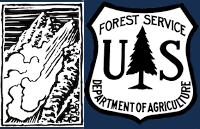Photos
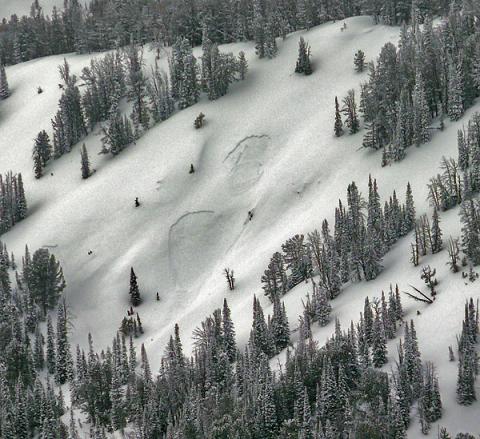
|
Cooke City, 2012-02-12 Over a foot of new snow is produicing natural activity in the mountains around Cooke City. Photo Beau Fredlund |
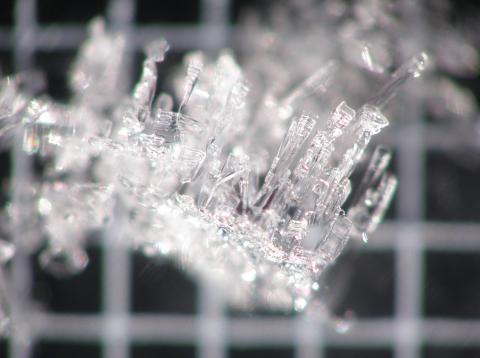
|
Northern Madison, 2012-02-11 During last weekend's beautiful weather, small delicate facets formed throughout SW Montana near the snow surface. After Friday's snowfall they were buried and preserved in most places creating a new weak layer in the snowpack. The grid in the background is 1-2 mm in size. These particular crystals are called radiation recrystallized facets photographed by the YC Ski Patrol conducting avalanche research with the Engineering School at MSU. |
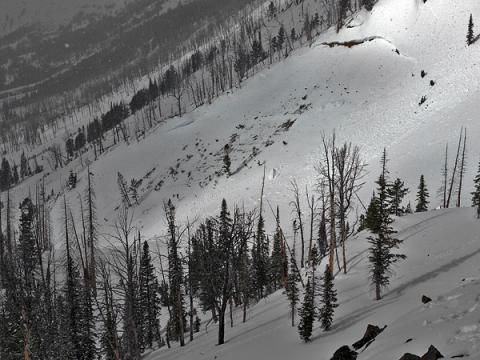
|
Cooke City, 2012-02-10 This avalanche broke on a S/SE facing slope near 9200 ft in the Sheep Creek drainage just norh of Cooke City. I broke 2-5 ft deep and ran about 700 ft. Photo: B. Fredlund |
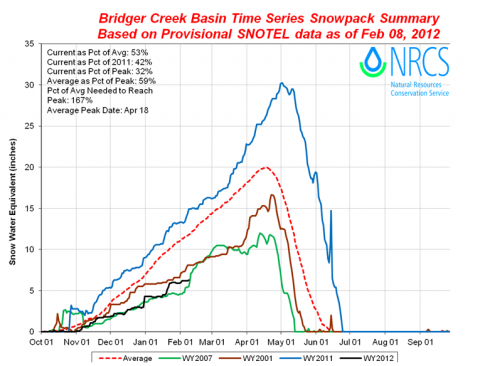
|
Bridger Range, 2012-02-09 This image shows snow water equivalent for the current year (black ), the 30 year average (dashed line) and previous years. According to the green line for 2007, the snowpack nearly doubled from early Feb to early March. According to the brown line for 2001, the snowpack increased by 50% starting in late March. Source: L. Zukiewicz, NRCS
|

|
Lionhead Range, 2012-02-05 The avalanche broke on Friday, February 3rd. It was likely a natural slide that failed on a thick layer of facets at the ground. Wind-loads from the southwest and south made hard slabs up to three feet thick. The slide ran 800 feet vertical (measured) and estimated to be 300 feet wide. Photo: GNFAC |
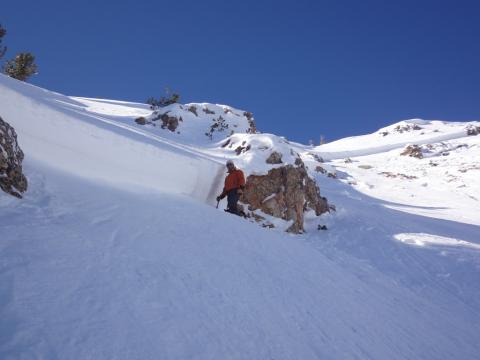
|
Lionhead Range, 2012-02-05 The avalanche was up to three feet deep. It was mostly a hard slab of wind-loaded snow sitting on a widespread layer of facets. The steepness ranged from 40 to 45 degrees. Photo: GNFAC |
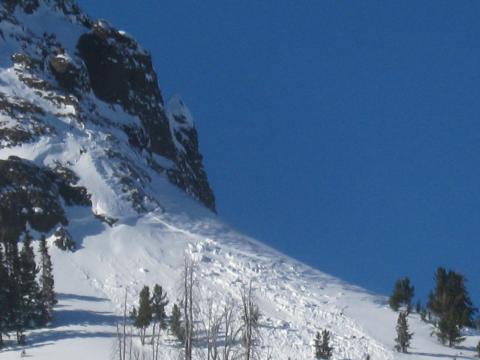
|
Cooke City, 2012-02-05 Natural avalnaches are still occurring in the mountains outside of Cooke City. This slide took place on a heavily wind loaded, east facing slope. Photo Will Shoutis |
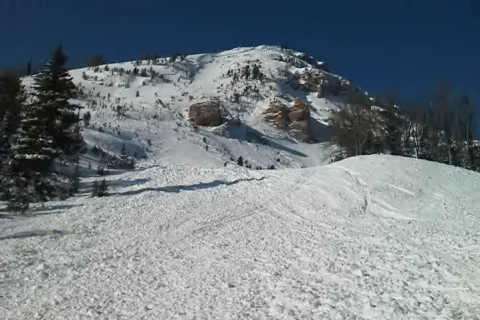
|
Lionhead Range, 2012-02-05 This large avalanche was seen yesterday on Lionhead near Airplane Bowl. It's an east to northeast facing steep slope. The slide buried part of the trail. It released on Friday, February 3rd. Photo: T. DeTienne |
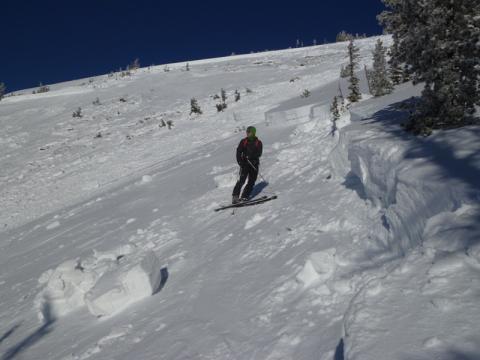
|
Cooke City, 2012-02-03 A thick slab resting over weak facets is making human triggered avalanches likely in the mountains around Cooke City. Photo GNFAC |
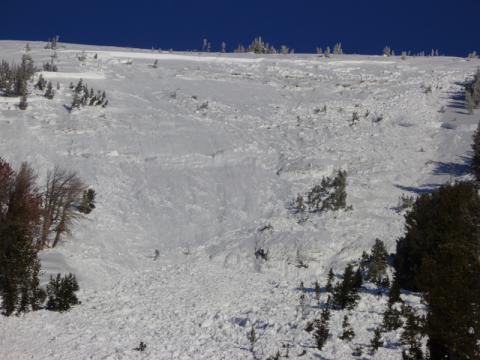
|
Cooke City, 2012-02-03 This slide was triggered remotely from low on the hill. A thick slab resting over weak facets is making for tricky conditions in the mountains around Cooke City. Areas where the snowpack is thinner, mainly around rock outcroppings are likely trigger points. Photo GNFAC |
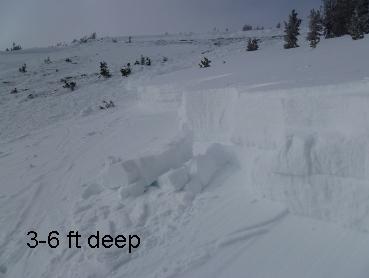
|
Cooke City, 2012-02-03 This avalanche broke on a weak layer of faceted snow crystals at the ground. This weak layer has been stressed by constant snowfall near Cooke City. Triggering avalanches on these deeply buried weak layers is difficult until you unintentionally find the sweet spot on the slope or under the slope. Photo: GNFAC |
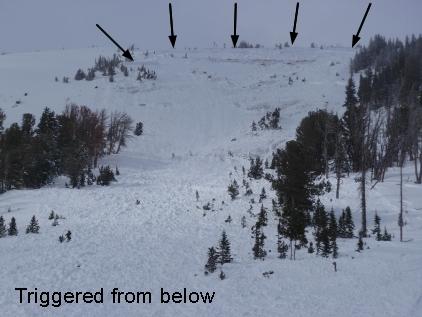
|
Cooke City, 2012-02-03 Arrows show the crown face of this avalanche that was triggered from flat terrain underneath this slope. Eric found the sweet spot where he initiated a fracture in the snowpack. The fracture propagated up and across the entire slope breaking at the ground 3-6 ft deep. Photo: GNFAC |
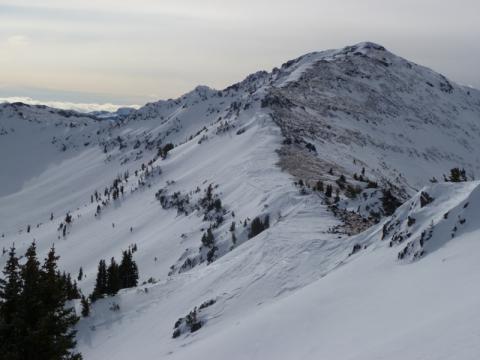
|
Northern Gallatin, 2012-01-31 At upper elevations in the northern Gallatin Range, some slopes are scoured and some are loaded. Leeward slopes below the ridgelines will be the most likely to hold unstable snow. Photo GNFAC |
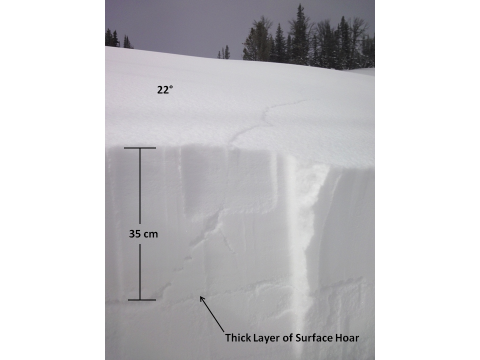
|
Southern Madison, 2012-01-31 As we skinned up the slope we got a large "whumph" and crack that propagated about 75 feet uphill. We dug into the crack and saw it was collapsing on a 1.5cm thick layer of well developed, feathery, surface hoar. This is Bulls-eye information that the snowpack is unstable. We made a video of the snowpit too: http://www.youtube.com/watch?v=NDthVJsSFjE Photo: GNFAC |
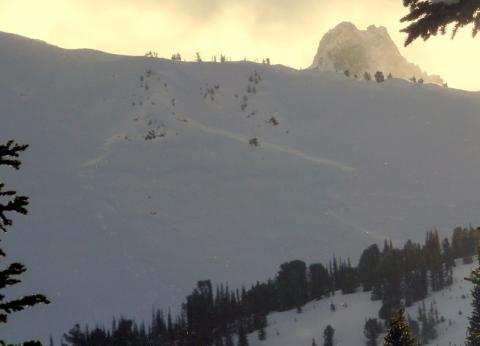
|
Cooke City, 2012-01-30 This slide occurred on Mt Henderson outside of Cooke City. New snow and strong winds are continuing to push a weak layer of factes buried 2-3 feet deep past its breaking point. Photo Ben Zavora |
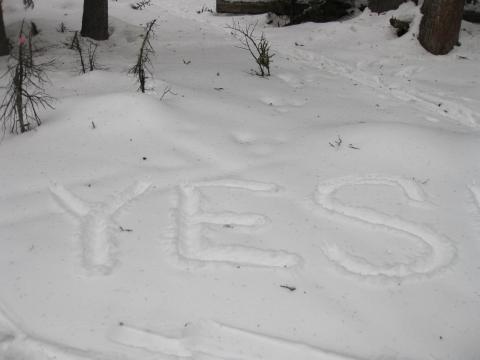
|
, 2012-01-29 Seth Meyer proposed to Kirsten Drake in yesterday's adivisory. They went skiing and "The only facets we found were placed on her finger. I feel confident that we can expect any future storms to adhere well to this layer, providing safe conditions for some epic days." |
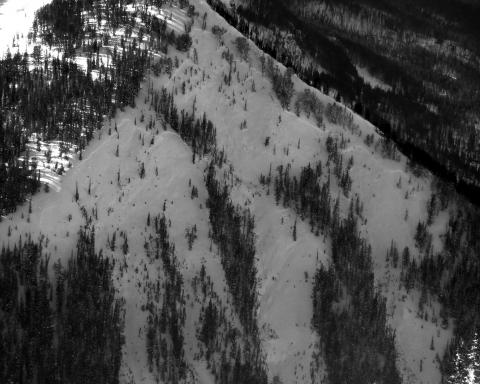
|
Cooke City, 2012-01-28 This natural avalanche occurred recently just south of Silver Gate on a ENE facing slope around 9000ft. It appears to be wind loaded from the left side, but it propagated of a wide area indicating the existence of a widespread, persistent weak layer. Photo: B. Zavora |
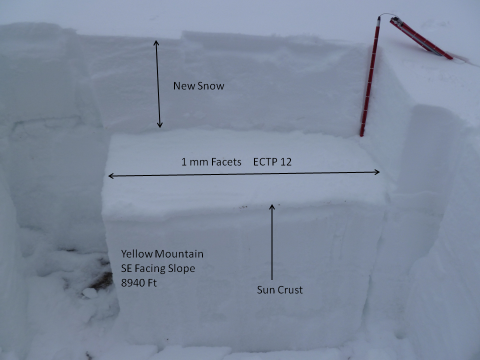
|
Northern Madison, 2012-01-26 Southerly aspects have a facet crust combo beneath the new snow, which is producing unstable results in stability tests. It's worth digging down to look for this layer if you're skiing on sun affected slopes. Photo: GNFAC |

|
Lionhead Range, 2012-01-24 This natural avalanche occured very early in the morning of Jan 24 after only a few inches of snow fell. This slope is easterly facing around 9000' elevation. When only a few inches of snow and some wind leads to natural avalanche activity, conditions are very unstable. Many other slides were seen on similar slopes. Some recent, some a few days old. Photo: GNFAC |
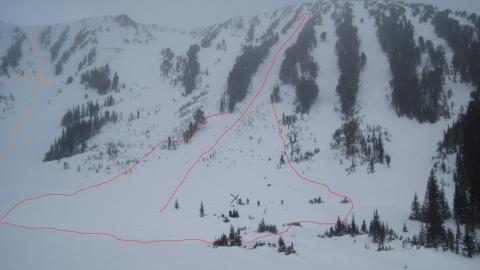
|
Cooke City, 2012-01-23 From an email: "Today me and friends were shuttling laps on lulu pass and watched a snomobiler get caught in a slide in those avalanche chutes next to the old cabin at the bottom of the pass. He was caught and buried but had a arm sticking out when we got there right away. We dug him out and he was not hurt. There was two other slide runouts visible on the same aspect and obvious signs of instability. Black is where the victim was buried. Blue is another sledder that was stuck when the slide occurred. Red outlines the crown, slide path, and run out. And orange is a slide that must have happened late yesterday or last night." Photo: G. Sunderland |
